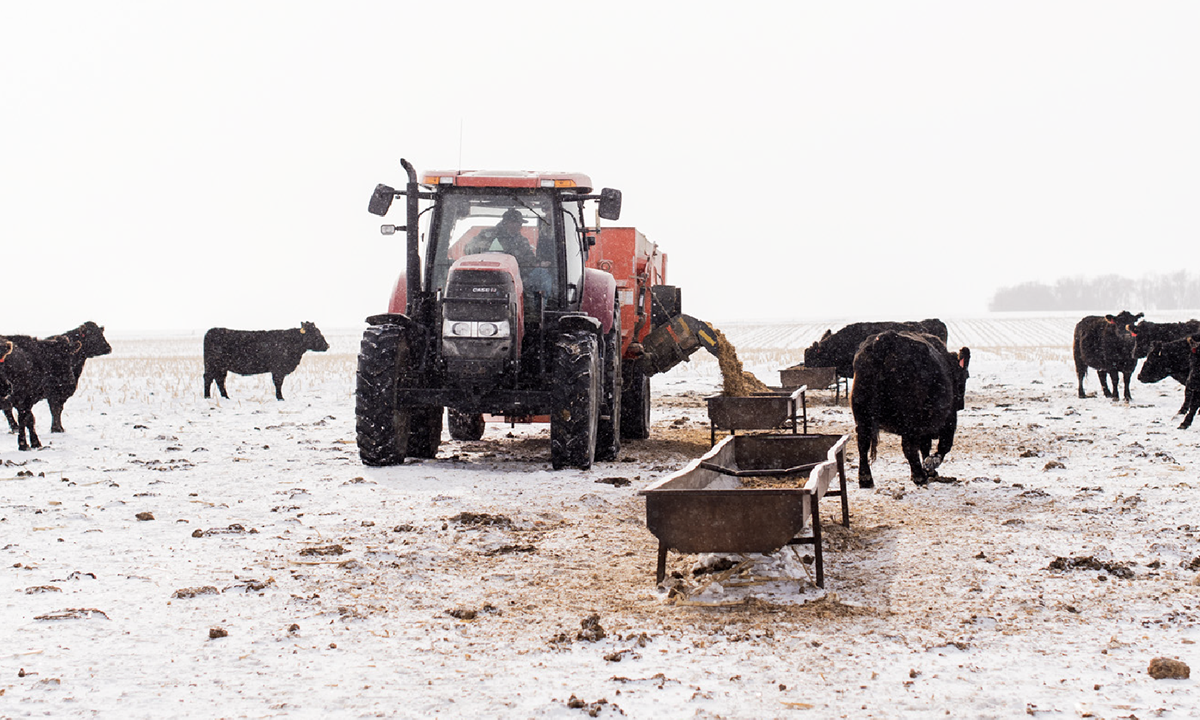Surviving South Dakota Winters: Farm Animals Resilience and Sustainable Farming
As the crisp South Dakota air turns frigid and snow blankets the landscape, the resilience of farm animals becomes ever more evident. Winter in the region can be harsh, but the animals on our farms have evolved and adapted over generations to thrive during this challenging season. We’re exploring the remarkable ways in which farm animals adapt to winter conditions, delve into their instinctual behaviors, and discuss eco-friendly and sustainable practices that farmers in South Dakota can adopt to minimize their environmental impact.
The Art of Adaptation
Farm animals, from horses and cattle to cats and dogs, have developed a range of adaptations to endure South Dakota's winter weather:
Thick Winter Coats: Many animals grow thicker fur or feathers in preparation for winter. This natural insulation keeps them warm and reduces the need for additional heating.
Behavioral Changes: Animals often adjust their behavior to conserve energy. They may become less active, seeking shelter and huddling together for warmth. This behavior helps them save energy during the colder months.
Winter Weight: Some animals naturally gain weight in the fall, which serves as a fat reserve to sustain them through the winter when food is more scarce.
Hoof and Paw Care: Hooved animals like horses and cattle have specialized hooves that provide traction on icy surfaces, preventing slips and falls. Similarly, dogs and cats have fur on their paws that helps insulate and protect against cold surfaces.
Natural Instincts: Instinct plays a significant role in helping animals adapt to winter. For instance, dogs often dig a hole in the snow to create a cozy nesting place, while livestock animals may gather near windbreaks and structures to shield themselves from harsh winds.
Sustainable Practices for South Dakota Winters
Now that we've explored the incredible ways in which farm animals adapt to cold winters, let's discuss some sustainable farming practices that can help South Dakota farmers reduce their environmental impact during this season. Winter poses unique challenges for farmers and ranchers, who often find themselves exposed to the harshest of elements while caring for their animals. In these frigid months, the well-being of livestock becomes paramount, and the risk of animal loss due to extreme cold is a constant concern. Moreover, the winter season can wreak havoc on fields, causing damage that can impact future crop yields. Despite these challenges, South Dakota's resilient farmers persevere, implementing innovative strategies to protect their animals and minimize environmental harm during the unforgiving winter months.
Efficient Heating and Insulation: Insulating barns and shelters can significantly reduce the energy required for heating. Did you know that soy products can be used as insulation? Implementing energy-efficient heating systems, such as radiant heat flooring, can further minimize energy consumption.
Windbreaks and Natural Shelters: Creating windbreaks using trees or other natural barriers can shield animals from harsh winter winds, reducing their energy expenditure to stay warm.
Proper Feeding: Maintaining a balanced and nutritious diet for your animals during winter is essential. Feed them slightly more to help them maintain their weight and energy levels.
Water Management: Ensure access to fresh, unfrozen water. Heated water systems can help prevent water sources from freezing over, reducing the energy needed to keep water accessible.
Manure Management: Properly managing manure during the winter months can reduce its environmental impact. Composting or using manure as a natural fertilizer in the spring can be eco-friendly alternatives.
Energy-Efficient Lighting: Implement LED or energy-efficient lighting in animal shelters to reduce electricity consumption.
Solar Power: Consider investing in solar panels to harness the abundant winter sunlight, providing sustainable energy for your farm operations.
Winter Pasture Rotation: If possible, practice rotational grazing in the winter. This can help maintain healthier pastures and reduce overgrazing in a specific area.
Emergency Preparedness: Have a plan in place for extreme winter weather events. This includes adequate food and shelter provisions for your animals in case of power outages or unsafe driving conditions.
Surviving and Thriving
Although South Dakota's winters may be harsh, our farm animals possess remarkable adaptations and instincts that enable them to survive and thrive during this season. By implementing eco-friendly and sustainable farming practices, farmers in South Dakota can not only reduce their environmental impact but also ensure the well-being of their animals and the longevity of their farms. Winter, despite all its challenges, can be a season of sustainability and resilience in South Dakota's farming community.
To learn more about what a day in the life of a farmer during the winter looks like, check out ambassador Elaina Lansons’s blog highlighting her experience with Castlewood farmer, Chad Schooley.



